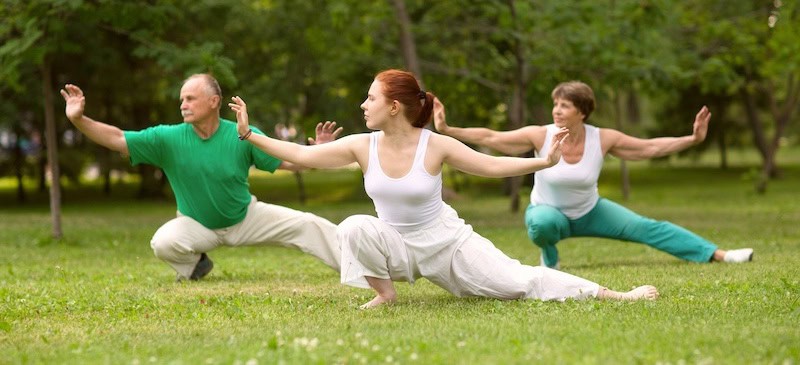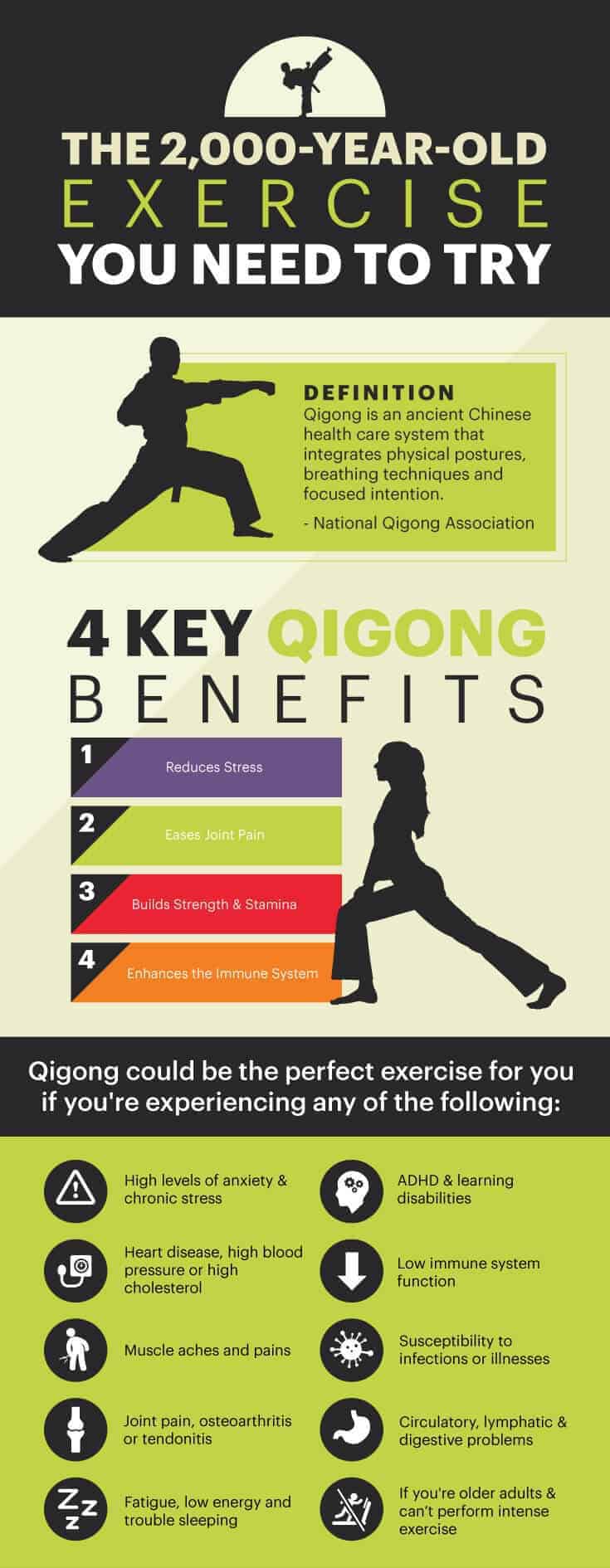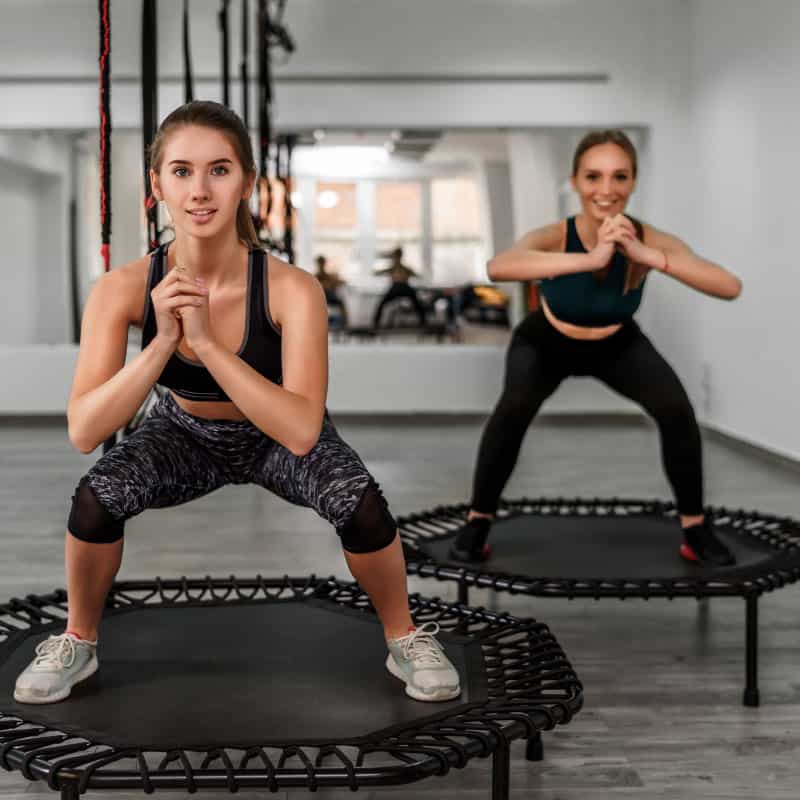This Dr. Axe content is medically reviewed or fact checked to ensure factually accurate information.
With strict editorial sourcing guidelines, we only link to academic research institutions, reputable media sites and, when research is available, medically peer-reviewed studies. Note that the numbers in parentheses (1, 2, etc.) are clickable links to these studies.
The information in our articles is NOT intended to replace a one-on-one relationship with a qualified health care professional and is not intended as medical advice.
This article is based on scientific evidence, written by experts and fact checked by our trained editorial staff. Note that the numbers in parentheses (1, 2, etc.) are clickable links to medically peer-reviewed studies.
Our team includes licensed nutritionists and dietitians, certified health education specialists, as well as certified strength and conditioning specialists, personal trainers and corrective exercise specialists. Our team aims to be not only thorough with its research, but also objective and unbiased.
The information in our articles is NOT intended to replace a one-on-one relationship with a qualified health care professional and is not intended as medical advice.
What Is Qigong? 11 Reasons to Add This Practice to Your Wellness Routine
April 21, 2025

Qigong (pronounced “chee-gong”) is an ancient Chinese practice that harmonizes movement, breath and meditation to cultivate and balance life energy, known as “qi.” Rooted in Traditional Chinese Medicine (TCM), qigong has been practiced for thousands of years to promote physical health, mental clarity and spiritual growth.
Qigong is considered a collective term for a long-established, extensive set of exercises first created in China more than 2,000 years ago. As many Eastern medicinal practices continue to gain popularity in the West, including acupuncture, meditation, Ayurveda and yoga, qigong and tai chi are also going mainstream.
Eastern practitioners have known about the benefits of qigong for centuries, and today Western scientific research is following suit, confirming that qigong can help prevent and manage many different health problems. The ancient practice is especially beneficial for older adults and people who are chronically stressed out.
In 2010, a meta-analysis published in the American Journal of Health Promotion found that after reviewing 77 articles on qigong, the research demonstrated consistent, significant benefits associated with the practice. Key benefits included:
- better bone density
- cardiopulmonary effects
- physical functioning
- reduced falls and related risk factors
- improved quality of life
- lower psychological symptoms
- better immune function
In today’s fast-paced world, qigong offers a holistic approach to wellness that addresses both the body and mind.
What is qigong?
Qigong is a comprehensive system of coordinated body posture, movement, breathing and meditation used for health, spirituality and martial arts training. It involves rhythmic movements, focused breathing and a calm, meditative state to enhance the flow of qi throughout the body.
Unlike high-intensity workouts, qigong is gentle and adaptable, making it accessible to individuals of all ages and fitness levels.
Qigong is the term for not just one, but many types of gentle movement and concentration practices stemming from China. Some experts believe that there are more than 3,000 different styles of qigong in existence today.
Qigong is one of the keys for people living in blue zones, areas where people regularly live to 100 years old. Today, holistic practitioners promote qigong for its proven stress-reducing benefits, plus its ability to improve flexibility and inner focus.
Qigong involves performing gentle movements that are synchronized with the inhalations and exhalations of the breath, making it similar to yoga in that it’s a powerful holistic practice for both the “body and mind.” Qigong is considered to be a form of exercise and a mental skill that must be mastered over time with practice.
Science has confirmed that qigong improves energy, inner peace, strength, sleep quality and vitality. Today, people practice many different forms of qigong (just like yoga), including tai chi, a gentler type that’s well suited for older people, and kung fu, a more vigorous practice that’s similar to other martial arts, like karate.
No matter the style of qigong, all types usually share several key characteristics:
- They feature specific body positions or exercises, which are both fluid and also held in place (stationary).
- Movements are tied to the breath.
- While movements are being performed, concentrated focus is also very important, giving qigong qualities similar to mindfulness meditation.
Qigong requires no equipment, can be performed just about anywhere, and can be tailored to an individual’s needs depending on her goals and physical abilities. This makes it a good exercise choice for just about anyone who’s looking to improve range of motion and relaxation.
History
Qigong’s 2,000-year-old roots stem back to ancient Daoist, Buddhist and Confucian philosophies. The word “qigong” (also sometimes called chi kung) is made up of two ancient Chinese words: qi ,which roughly translates to “life force” or “vital energy,” and gong, which means “skill” or “accomplishment.”
Although the term qigong can be traced back to Daoist literature of the early Tang Dynasty (618-907 A.D.), the modern interpretation only became popular in the West during the 1940s and ’50s.
For those living in the West who are unfamiliar with TCM, it can be hard to describe all that qigong encompasses. The best way to summarize its purpose is that it promotes optimal flow of qi (energy), warms up the body and calms the mind all at the same time.
Qigong practices have a long history in TCM. In earlier periods, qigong was sometimes referred to by other names including “Nei gong” (which means “internal work”) or “Dai yin” (which means “steered energy”).
There have been many influential leaders in the qigong movement over the past 20 centuries, all teaching their own methods for achieving a higher realm of awareness, awakening one’s “true nature” and fostering better health.
In Confucianism, qigong was promoted for longevity and moral character. In Daoism and Buddhism, it was viewed as part of meditative practice. In Chinese martial arts, it’s been used to increase strength for battle.
Historically, qigong training and knowledge was passed down from one master to a dedicated student, which has created distinct lineages and many unique interpretations and methods.
Types
Qigong encompasses various styles and techniques, each with specific focuses and benefits. The primary categories include:
- Medical qigong: Aims to prevent and treat illnesses by balancing the body’s energy systems.
- Martial qigong: Enhances physical strength and stamina, often practiced alongside martial arts.
- Spiritual qigong: Focuses on cultivating inner peace and spiritual enlightenment through meditation and breath control.
Popular qigong styles include:
- Five elements qigong: Aligns movements with the five elements of TCM (wood, fire, earth, metal and water) to balance internal energies.
- Buddha palm qigong: Combines gentle movements with visualization techniques to promote healing and relaxation.
- Swimming dragon qigong: Involves fluid, wave-like motions to enhance flexibility and circulation.
Each style offers unique benefits, allowing practitioners to choose the form that best suits her individual needs and goals.
Benefits
Although it’s widely believed in Traditional Chinese Medicine that qigong practices can help just about all aspects of life, below are some of the ways qigong has been proven to help the most.
1. Helps lower blood pressure and improves heart health
Movement associated with qigong/tai chi is said to stimulate natural energy, known as qi (chi). Many tai chi practitioners report feeling warmer, more limber, tingly and more energetic after they practice.
In Western science, this idea is explained through qigong’s ability to improve circulation and lymphatic drainage.
Qigong can definitely range in terms of intensity, which means it affects the cardiovascular system differently depending on the style.
Some practices involve slow, steady, deep and smooth movements linked with breath. This helps calm a racing heart and mind.
A more vigorous practice can increase someone’s heart rate, causing him to sweat while providing a low-to-moderate intensity aerobic workout.
Studies have shown that qigong/tai chi can often help improve blood pressure by increasing stamina, strengthening the heart, boosting circulation and lowering stress. For instance, research out of National Taiwan University Hospital suggested that tai chi is safe and effective for patients with myocardial infarction, coronary heart disease, and those who have had bypass surgery and heart failure.
2. Reduces risk of falling and injuries in older adults
A 2005 study published in the Journal of Gerontology found that a three-times-per-week, six-month tai chi program effectively decreased the number of falls, the risk of falling and the fear of falling in patients over the age of 70. Researchers also found that patients experienced significant improvements in overall functional balance and physical performance, even when the patients were physically inactive and limited in their abilities before the study.
The gentle movements improve physical coordination and reduce the risk of falls, especially in older adults.
3. Lessens negative effects of stress
Qigong’s meditative aspects help lower stress levels and promote emotional balance.
A 2014 review published in the International Journal of Behavioral Medicine found that tai chi interventions have beneficial effects for various populations on a range of psychological well-being measures, including depression, anxiety, general stress management and exercise self-efficacy. Because stress and digestion are closely linked, tai chi and qigong can also help with issues like gastritis, irritable bowl syndrome and ulcers.
Qigong is said to help re-establish the body/mind/soul connection. In this way, it goes beyond what many other types of exercises do, often impacting practitioners on a deeper, emotional level.
Some of the mental benefits associated with qigong/tai chi include deeper spiritual development, experienced body confidence, better attention span and a deeper sense of connection to others.
The linking of body movements, breath and focus makes tai chi and yoga very similar. Both practices help improve functions of the parasympathetic nervous system, which calm the body and mind down, reduce nervousness and muscle tension, improve deep breathing, and can help with relaxation and deep sleep.
4. May boost immunity and aid cancer patients
Qigong may strengthen the immune system, aiding in disease prevention, and it’s even been shown to help improve symptoms and quality of life in cancer patients.
For example, the Hospital of Guangzhou Medical University in China reported that of all mind-body interventions that are widely used by cancer patients to reduce cancer symptoms and better cope with disease, qigong/tai chi has emerged as one of the most effective.
The institution’s research tested the effects of qigong’s ability to improve quality of life and other physical and psychological effects in 592 cancer patients. The results showed that qigong practice significantly helped reduce fatigue, improved immune function and lowered cortisol level in the majority of patients.
5. Alleviates chronic pain
Qigong has been found to alleviate chronic pain, including lower back pain. It also has been found to help with arthritic pain.
In 2008, the Peninsula Medical School performed a review of data from 12 controlled, clinical trials testing the effectiveness of tai chi for treating degenerative joint diseases, such as osteoarthritis and joint pain.
The study found significant pain reduction in patients practicing tai chi compared to routine treatment. Researchers also found some evidence of improvement of physical functions and activities of daily living in the tai chi group.
While there’s some encouraging evidence suggesting that tai chi may be effective for controlling chronic pain, researchers point out that future studies done on a larger patient population and for longer treatment periods are still needed before tai chi will replace other standard treatment options.

6. Increases flexibility and range of motion
A quasi-experimental, placebo-controlled study investigated the effects of an eight-week qigong training program on sedentary middle-aged and elderly women with type 2 diabetes mellitus. The results demonstrated significant improvements in leg strength and trunk flexibility compared to the control group.
Additionally, participants exhibited enhanced cardiorespiratory fitness and a more favorable antioxidant/oxidant balance.
Another 12-week study focused on Liuzijue, a qigong-based breathing exercise, assessed its impact on the curvature and range of motion of the thoracic and lumbar spines. Participants experienced significant improvements in spinal flexibility and posture, indicating that specific qigong practices can effectively enhance spinal mobility.
These studies provide evidence that qigong can be a valuable practice for improving flexibility and range of motion, particularly in populations such as older adults and individuals with chronic health conditions.
7. Enhances strength
Qigong can lead to measurable improvements in muscle strength across different age groups, as shown in research.
A randomized, controlled trial involving 125 middle-aged and older postmenopausal women assessed the effects of a 12-week qigong exercise program on muscle strength and postural control. The study found that participants in the qigong group experienced significant improvements in muscle strength, as measured by dynamometer tests, compared to the control group.
Additionally, enhancements in postural control were observed, indicating that qigong can be an effective intervention for improving muscle strength and balance in this population.
8. Protects the respiratory system
The breathing techniques in qigong support lung function and may benefit individuals with respiratory conditions.
A meta-analysis published in 2018 evaluated the effects of Liuzijue qigong on patients with chronic obstructive pulmonary disease (COPD). The analysis found that Liuzijue qigong significantly improved lung function, exercise capacity, health status, mental well-being and quality of life in COPD patients.
Another longitudinal trial assessed the impact of a four-week weight-bearing Liuzijue qigong program on healthy volunteers. Participants performed exercises with 0.25 kg sandbags on each wrist, five times a week.
The study reported significant improvements in pulmonary function metrics, including forced expiratory volume in one second, forced vital capacity and maximum ventilatory volume.
These studies suggest that qigong practices, particularly Liuzijue qigong, can be beneficial for both individuals with respiratory conditions and healthy individuals aiming to enhance their pulmonary function.
9. May improve focus
Studies have provided evidence that qigong practices can be effective in improving focus and cognitive functions in humans.
A 12-week, randomized, controlled trial investigated the effects of Wu Xing Ping Heng Gong, a form of qigong, on cognitively healthy older adults. The study found significant improvements in neurocognitive functions, including attention and executive function, in the qigong group compared to the control group.
These cognitive enhancements were associated with changes in serum interleukin-6 (IL-6) levels, suggesting a neuroimmune mechanism underlying the benefits of qigong.
Another study involving 99 acupuncturists assessed the impact of a 24-week Baduanjin qigong program on attention and cognitive functions. Participants in the Baduanjin group showed significant improvements in attention and cognitive performance compared to those in aerobic exercise and control groups.
Functional MRI scans indicated that these enhancements were associated with changes in brain regions related to attention and cognition.
10. Strengthens bones
A randomized, controlled trial analyzed the effects of a 12-week Baduanjin qigong program on middle-aged women. The study found that participants in the qigong group maintained bone mineral density and exhibited reduced levels of interleukin-6 (IL-6), a marker associated with bone resorption, compared to the control group.
These findings suggest that Baduanjin qigong may be effective in preventing bone loss in this population.
Further research involving patients recovering from second- and third-degree thermal burns evaluated the impact of adding qigong exercises to standard physiotherapy over an eight-week period. The results indicated that the group practicing qigong experienced significant improvements in bone mineral density and balance control compared to the group receiving only physiotherapy.
This suggests that qigong can be a beneficial adjunct therapy for enhancing bone health in patients with compromised bone integrity.
11. Promotes sleep
Studies have shown that qigong can enhance sleep by calming the nervous system.
A 2022 meta-analysis reviewed 13 randomized, controlled trials involving 1,147 adults. The findings indicated that health qigong significantly improved sleep quality.
The authors concluded that health qigong is beneficial for improving sleep quality in adults with and without disease, though some effects could be partially due to nonspecific factors.
In addition, a 12-week, randomized, controlled trial involving 125 Spanish postmenopausal women assessed the effects of a Baduanjin qigong program. Participants in the qigong group showed significant improvements in sleep quality, including better sleep latency, duration and efficiency, as measured by the Pittsburgh Sleep Quality Index.
Additionally, reductions in anxiety and depression were observed, suggesting qigong’s multifaceted benefits on mental health and sleep.
How to do it
Starting a qigong practice is simple and requires no special equipment. Here’s a basic routine to get you started:
- Find a quiet space: Choose a peaceful environment where you can focus without distractions.
- Warm-up: Begin with gentle stretches to prepare your body.
- Practice basic movements: Start with simple exercises, like “lifting the sky” or “holding the ball,” focusing on slow, deliberate motions.
- Coordinate breathing: Inhale and exhale deeply in sync with your movements to enhance the flow of qi.
- Meditate: Conclude your session with a few minutes of seated meditation to center your mind.
The most popular way to practice qigong is to learn a short series of tai chi. Tai chi is usually practiced as a series of graceful, seamless hand forms which vary in length.
Chen Meng is credited with creating a popular, shortened version of traditional tai chi that lasts about 15 minutes. It’s simple to learn and perform at home.
Tai chi series normally require a significant amount of open space, so it’s common to practice outside in a field or in an empty room.
- Warm-up: Make sure you first warm up by practicing simple stretches or calisthenics to move your legs, arms and back. Wear loose clothing that allows you to move around and stay cool. For tai chi beginners, it’s usually best to take things very slowly and spend 10 to 20 minutes a day learning just a few postures rather than rushing through an entire routine. It takes time to learn proper form and posture, so be patient and try not to force the practice. (This can defeat the whole point.)
- Beginner posture: This is the most basic tai chi pose. It requires your feet to be shoulder-distance apart, your toes facing slightly inward, knees soft, chest and chin slightly hollowed, and hips slightly tucked. Some describe the pose like you’re sitting in a high stool.
- Basic stepping exercise: Stepping from one posture to the next is important in qigong. This requires learning how to transition smoothly and gently, rolling/placing the feet with balanced weight. Keep your center of gravity low while stepping and rolling your entire foot so both feet rest on the ground in the end position.
- Catch a ball/ball of energy: Rub your hands together, and pull them apart. (They are now “filled with warmth and qi.”) Then bring them close together again, but don’t allow them to touch. Continue to pull your hands apart and bring them closer together, repeating with a slow and steady rhythm, perhaps stepping at the same time.
- Single whip or ward off: This moving hand position is typically used for jabbing, whipping, striking or even in massage. Place the hand with palm facing downward and the four fingers curled to lightly touch the thumb. The front leg is extended out, body open to the side, front arm moves forward and the wrist bends down as the fingers open and close.
- Roll back: This move uses the waist and is done in a diagonal position. Put weight on your left leg, and turn your waist to the left. The right arm curves to hold a ball against your chest, fingers move upward while left arm arcs first downward, then left arm floats up to shoulder height.
Who can benefit most from qigong?
Qigong is suitable for individuals of all ages and fitness levels. It is particularly beneficial for:
- Older adults: Enhances balance and flexibility, reducing the risk of falls.
- Individuals with chronic conditions: Assists in managing symptoms of conditions like arthritis, hypertension and chronic pain.
- People experiencing stress or anxiety: Promotes relaxation and emotional well-being.
- Those seeking spiritual growth: Supports mindfulness and inner peace.
According to the National Qigong Association, qigong practices can be classified as martial, medical and/or spiritual.
From an alternative/complementary medicine perspective, qigong is medical because it is a sort of exercise, involves the body, and can promote better cardiovascular health, joint flexibility and even stronger immunity through lowering chronic stress.
Qigong is martial because it’s a learned skill that’s based on centuries’ worth of teachings, often described as a true “accomplishment,” something that can be mastered only with many years of practice.
Finally, it’s spiritual because it involves a mindful concentration of the breath and a focus on improving qi (“inner life force”). This unites all people while including the use of meridians (a system used in acupuncture) involving how energy flows in the human body. The spiritual aspect of qigong makes it different than many other forms of exercise and is one of the reasons it’s believed to bring out reductions in stress for many people.
Based on the fact that qigong can help reduce stress, lower joint pain, build strength and stamina, and enhance the immune system, people who can benefit from it most include those with:
- high levels of anxiety/stress
- heart disease, high blood pressure or high cholesterol
- muscle aches and pains
- joint pain, osteoarthritis or tendonitis
- fatigue, low energy and trouble sleeping
- ADHD and learning disabilities
- low immune system function and susceptibility to infections or illnesses
- those with other circulatory, lymphatic and digestive problems (such as intestinal or kidney problems)
- older adults who can’t perform intense exercise
Qigong is most popular among middle-aged to older-aged adults. Many practitioners find that it helps them remain flexible, strong and calm into older age.
It might also help increase recovery time from illnesses or traumatic events.
Qigong vs. tai chi
What is tai chi, and how is it different from qigong?
- Tai chi is considered to be a specific style of qigong, but it’s far from the only style. Tai chi involves a specific series of postures and exercises, while qigong can be practiced in no particular order
- Tai chi is one of the most popular forms of qigong in the West and is a gentle, slow, flowing style of martial arts. Qigong itself does not always have to be performed this way. For example, qigong can also be static, such as the style called Zhan Zhuag, or very rapid and intense, such as the style called Dayan.
- Tai chi moves have been shown to help promote better circulation, range of motion and mindful focus. Tai chi practices range from anywhere between 10 minutes to two hours long.
- Most research done in the West involving the health benefits of qigong have studied the effects of tai chi, since it’s now popular in places like the U.S and Europe, customizable for different audiences and well-suited to manage many different health conditions.
Precautions
While qigong and tai chi can certainly help improve flexibility, balance, pain and anxiety in many ways, these practices are probably most effective when combined with other healthy habits, like other types of aerobic exercise, strength training and also eating a healthy diet.
Qigong is suitable for older people, those with pain and limitations, and people recovering from injuries, but it’s still best to get a professional opinion and clearance to begin qigong if you’re unsure.
The best way to get started safely is to be guided by a well-trained teacher, so consider attending a class or even using online videos as a guide.
Final thoughts
- Qigong is an ancient Chinese healthcare practice that has been in existence for more than 2,000 years.
- There are thousands of different styles of qigong practiced throughout the world, all of which integrate physical postures, breathing techniques and focused intention.
- Tai chi is one form of qigong. Its benefits include stress reduction, decreased joint pain, improved heart health, better physical functioning, improved balance and protection from falls.
- Qigong offers a holistic approach to health and well-being, integrating physical movement, breath control and meditation. Its versatility and accessibility make it an excellent practice for anyone seeking to enhance their physical health, reduce stress and achieve a balanced lifestyle.









